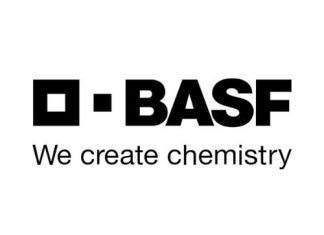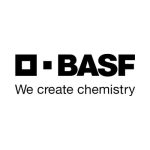In early 2024, South Africa faced a significant peanut butter recall due to the detection of elevated levels of aflatoxin. When the exact extent of contamination is unclear, a broad recall is often necessary due to extensive and complex food product distribution networks, making it challenging to identify and isolate contaminated batches only.
This recall affected several brands, prompting the National Consumer Commission (NCC) to urge consumers to stop consuming these specific products and return them for a refund. According to a media statement by the NCC, the products originated from a single manufacturer, House of Natural Butters (Pty) Ltd. While reportedly meeting safety standards at the point of production, subsequent tests indicated contamination, prompting a nationwide removal of the products from shelves. The actual extent and level of contamination have not been made public, and official reports on the origin of the raw product are still awaited, although it is speculated that it was linked to cross-border imports.
The NCC urged all producers, manufacturers, and suppliers of peanut butter, peanut butter-based products, and products containing peanuts to immediately test their products for aflatoxin levels and submit their results to the NCC. Subsequently and as confirmed by a media statement, Clover (Pty) Ltd informed the commission that they had recalled just below 11 000 units of Go Nuts Peanut Butter 400 g after numerous tests revealed higher than acceptable levels of aflatoxin.
However, according to an informed statement made by Janusz Luterek (Hahn & Hahn) during the 2024 Food Safety Summit, the recent peanut butter recalls in South Africa did not reveal any consumer health complaints or harm.
Compliance and quality assurance measures among prominent peanut butter manufacturers
Several prominent peanut butter manufacturers in South Africa have successfully complied with the NCC request. Brands such as Black Cat, Yum Yum, Thokoman, and several house brands from major retailers like Shoprite, Checkers, Pick n Pay and Woolworths have confirmed their products are safe for consumption and not affected by the recall. These manufacturers adhere to rigorous food safety measures, including regular third-party testing of peanuts before, during and after final processing, to ensure compliance with aflatoxin standards.
These companies bear significant costs to ensure quality and safety. Regular testing, third-party audits, and maintaining robust safety protocols and certification require substantial investment as these measures are crucial not only for regulatory compliance but also for preserving consumer trust and protecting public health.
Introduction to aflatoxins
During the recent Food Safety Summit, Prof Lucia Anelich, a professional natural scientist (Pr.Sci.Nat.) with the South African Council for Natural Scientific Professions (SACNASP), discussed the topic ‘Aflatoxin – Preparing for the Unexpected’. She highlighted aflatoxins as potent toxins produced by certain fungi, specifically Aspergillus flavus and Aspergillus parasiticus. These toxins are a significant concern in food safety due to their presence in various agricultural products, including groundnuts and maize.
There are four major naturally occurring aflatoxins – B1, B2, G1, and G2. They are named for their blue (B) or green (G) fluorescence under UV light. Aflatoxin M1 is a metabolite found in milk.
The presence of Aspergillus fungi does not necessarily mean that aflatoxins are present. A range of factors influence whether the fungi will produce aflatoxins. Conversely, the absence of visible fungi does not ensure the absence of mycotoxins, as toxins can persist even after the fungi have died. Aflatoxins are chemically stable compounds and resistant to heat, and standard cooking and food processing temperatures are not sufficient to completely destroy them.
Health impacts of aflatoxins
Aflatoxins B and G are classified as a Group 1 carcinogen by the International Agency for Research on Cancer (IARC), meaning it is known to cause cancer in humans. It has a high affinity for binding to DNA, forming adducts that can lead to mutations and cancer, particularly liver cancer (hepatocellular carcinoma).
Acute toxicity
Aflatoxins can cause acute toxicity or aflatoxicosis, leading to severe health effects such as liver failure, anorexia, low-grade fever, malaise, vomiting, abdominal pain, respiratory failure, convulsions, coma, and death. Symptoms include feeling generally unwell and experiencing fatal acute hepatitis. Hepatic encephalopathy and fatty degeneration of viscera can also occur, causing distorted memory and short-term memory loss due to the liver’s inability to process toxins.
Historical cases of acute aflatoxicosis highlight the rapid onset and severe outcomes of such contamination:
- Thailand (1969): 81 deaths within 48 to 72 hours from onset of symptoms were recorded (of which 40 were children between one and twelve years) due to contaminated noodles. Autopsies showed levels of between 93 and 126 ppb B1, indicative of remarkably high ingested levels.
- Malaysia (1969): 13 children died, once again due to contaminated noodles, with levels of 3 000 ppb estimated per single serving.
- India (1974): Maize contamination resulted in 106 deaths, with extremely high aflatoxin levels of between 6 000 and 15 600 ppb recorded.
- Kenya (1981 and 2004): Notable cases included twelve deaths in 1981 and a major occurrence in 2004 with 125 deaths (from 317 cases) and exceedingly high aflatoxin levels in maize (with the maximum levels in 2004 found to be 46 500 ppb in the largest recorded outbreak).
The unfortunate reality is that those surviving their symptoms go back to consuming the same contaminated food as they simply have no other alternatives. This poses the question as to what happens in other communities, including local, poverty-stricken ones.
 Chronic exposure
Chronic exposure
Chronic exposure to low levels of aflatoxins can eventually lead to liver cancer, particularly hepatocellular carcinoma. Approximately 4,5 million people are exposed to low levels of aflatoxins, with around 500 million people worldwide exposed to levels higher than tolerable. Notably, 40% of global hepatocellular carcinoma cases occur in Africa.
Other risks include immunosuppression and growth retardation when pregnant mothers transmit aflatoxins via the placenta to the fetus.
Factors affecting toxicity
The importance of putting the issue of aflatoxin contamination into perspective, and a need to avoid causing unnecessary panic among consumers while ensuring they are adequately informed, cannot be overstated.
Numerous factors influence the toxicity of aflatoxins, including age, weight, health status, diet variety, portion size, consumption frequency, and exposure duration. The World Health Organization (WHO) provides guidelines on acutely toxic and potentially lethal exposure levels as between 20 and 120 micrograms (ug) per kilogram of bodyweight per day, consumed three times per week.
According to Prof Anelich, the following hypothetical example of an amount of peanut butter contaminated with aflatoxin B1 concludes that while acute toxicity is highly unlikely from typical consumption, the risk of long-term effects, like liver cancer, remains notable.
Assuming peanut butter contains a relative high level of 500 micrograms (ug) of aflatoxin B1 per kilogram (far exceeding the South African regulatory limit of 10 ug/kg) and a portion size of 64 grams per day (double the typical US portion size), for an individual weighing approximately 60 kg, it is calculated that, at the lower end of the WHO guideline (20 ug/kg of body weight per day, three times a week), one would need to ingest 2,4 kg of such highly contaminated peanut butter three times a week minimum, to potentially experience acute toxic effects. Depending on how regularly and over what period of time this hypothetical elevated level of 500 ug/kg product is consumed, the risk of liver cancer in one to two decades may be a possible, however not certain, outcome.
Conversely, at the higher end of the WHO guideline (120 ug/kg of body weight per day, three times a week), one would need to consume 14,4 kg of the same peanut butter three times a week to reach acutely toxic levels.
Not negating the risks and importance of accountability and control, these scenarios highlight the critical role of consumption frequency and duration in determining health risks associated with aflatoxin exposure, while underscoring the complexity of assessing such risks correctly. National authorities should provide clear and accurate information about any food safety risk episodes, measures taken, as well as potential health effects to ensure that consumers understand the risks, and avoid scaremongering and undue alarm.
Fungal presence and growth conditions
Aflatoxins are produced by fungi naturally found in the soil and controlling these fungi is therefore challenging. Warm and humid conditions, insect damage to plants, and plant stress from drought or high soil temperatures can promote fungal growth and toxin production. Inadequate storage conditions post harvest, such as hot and humid environments, further exacerbate aflatoxin contamination.
On-farm practices should therefore aim to prevent water stress where possible, control pests, and ensure proper drying and storage conditions. Ideal storage conditions include temperatures below 10 ˚C and a relative humidity of not more than 65% to 70%.
Regulatory standards and guidelines
Given the heterogeneous nature of aflatoxin distribution, product processors and manufacturers should understand the limitations of product testing and use it as a guide rather than an absolute measure. Ensuring that testing methods are well validated and understanding the potential for variability in results are crucial for effective aflatoxin management.
The Codex Alimentarius standard provides a comprehensive sampling plan for total aflatoxins in groundnuts intended for further processing. Manufacturers should sample incoming raw materials to verify compliance with regulatory standards and validate the effectiveness of their HACCP (hazard analysis and critical control points) systems. End-product testing, while important for verification, should be complemented by in-process controls and validated testing methods. Blanching and sorting processes are critical for removing visibly contaminated kernels, thus reducing the overall toxin load.
There is no zero risk in food production, but an objective and comprehensive understanding of aflatoxin contamination underscores the importance of vigilant control measures and informed regulatory practices to safeguard public health.
Consumer product safety recalls: challenges and insights
In the world of consumer product safety, recalls play a crucial role in protecting the public from potentially hazardous goods. Presenting at the 2024 Food Safety Summit, Luterek detailed the intricate process of recalls in South Africa, shedding light on the various challenges and regulatory nuances involved.
Product recalls are categorised into voluntary and compulsory recalls in South Africa. Multiple governmental departments participate in the framework for food recalls: The Department of Health (DOH) handles food public health issues, while the Department of Agriculture deals with product composition and quality standards. The Advertising Regulatory Board oversees marketing issues, but actual product recalls fall under the Consumer Protection Act (CPA), managed by the NCC.
Luterek emphasised the complexity due to multiple regulations, as illustrated recently during peanut butter recalls, which are governed by various regulations under the Foodstuffs, Cosmetics, and Disinfectants Act (FCD Act). In terms of this act, it potentially becomes a criminal offence to import, manufacture, distribute or sell contaminated foodstuffs. While there is no general power under the FCD Act to order someone to conduct a recall, the DOH could initiate prosecution through the National Prosecuting Authority, or alternatively or additionally, they could refer the matter to the NCC to institute a recall.
Voluntary recalls are typically initiated by suppliers, sometimes under significant pressure from regulatory authorities, making them somewhat quasi-compulsory. Compulsory recalls, on the other hand, are only ordered by the commission as a last resort if a voluntary recall has not been conducted. This distinction is important, as it reflects the regulatory framework’s preference for suppliers to take proactive measures.
Urgency is paramount in managing recalls. The guidelines mandate that suppliers notify consumers in writing within two days of initiating a voluntary recall. This notification must clearly outline the defect and the associated dangers. Failure to notify the commission is considered a criminal offence, underscoring the seriousness of the recall process.
Notices must provide enough detail for consumers to understand the recall, including what the defect is, why the product is dangerous, and the steps consumers need to take. Even after closing a recall, companies must continue to accept returns if consumers bring back the product. This ongoing responsibility ensures that all potentially hazardous products are eventually removed from circulation.
The complexity of the supply chain, with third-party manufacturers producing for multiple brands and distributing to various retailers, causes communication delays and slow recall actions in some instances. While certain retailers quickly inform the NCC, others delay for further testing, with online retailers further complicating the recall process.
Importance of regulatory oversight and surveillance
To mitigate brand damage, companies should conduct responsible recalls and ensure corrective actions, such as verifying that all test reports and certificates are in place. This transparency and accountability can help maintain consumer trust despite the challenges and costs involved in recalling products.
Large manufacturers and retailers often have robust food safety practices, but smaller manufacturers frequently fall short, highlighting the need for more education and stringent compliance measures for these entities. Regulatory authorities must enforce compliance more rigorously to protect consumers. It was reported by a leading peanut butter manufacturer that while the recall of smaller brands did not significantly impact the peanut butter market, major incidents like an earlier processed meat listeriosis outbreak severely damaged consumer confidence and sales.
Industry role-players agree that there is a need for effective surveillance and monitoring by regulatory bodies of food business operators of all sizes. They advocated for better monitoring, transparent reporting of food safety issues and the need for industry-wide collaboration and information sharing to prevent food safety incidents. While legal and liability concerns inhibit open sharing of detailed recall and subsequent investigation outcomes and action, the importance of collaboration through platforms like the Consumer Goods Council of South Africa, industry bodies, and responsible government structures, and the manufacturers’ responsibility to share learnings within the industry to prevent future incidents, cannot be stressed enough.

















